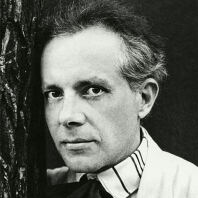Béla Bartók
Compositeur
Au côté de son ami et collègue Zoltán Kodály, Béla Bartók a fondé la tradition des grands compositeurs hongrois du XXe siècle, perpétuée ensuite par György Ligeti, György Kurtág et aujourd’hui Peter Eötvös. Parallèlement, ses œuvres incarnent de manière quasi idéale le « modernisme classique », si l’on entend par là l’équilibre entre progressisme et respect de la tradition.
Bartók est né dans une petite ville de la région du Banat, alors hongroise, aujourd’hui roumaine, et est issu d’une famille mélomane. Très tôt, il se fait remarquer par son talent exceptionnel de pianiste et de compositeur. Bartók étudie à Bratislava puis à Budapest, où il enseigne plus tard le piano au conservatoire de 1908 à 1934. Pianiste de renommée internationale, il se produit en 1920 et 1926 avec les Berliner Philharmoniker lors de concerts où il joue ses propres œuvres. Ses recherches inlassables sur les folklores hongrois, slave et arabe sont destinées non seulement à collecter des matériaux pour son propre travail de compositeur, mais à contribuer à la science musicologique. Il est aussi un observateur attentif des évolutions stylistiques internationales : les innovations de Debussy, Stravinsky et Schönberg comptent parmi ses sources d’inspiration au même titre que l’œuvre tardif de Franz Liszt. Adversaire du fascisme et du nazisme, Bartók émigre aux États-Unis en 1940. Là, accablé de soucis financiers et parfois gravement malade, il écrit certaines de ses plus belles œuvres : le Concerto pour orchestre, la Sonate pour violon seul, le Concerto pour piano n° 3 et son unique Concerto pour alto, toutes très populaires aujourd’hui. Du fait de leur qualité, les œuvres vocales, orchestrales et chambristes de Bartók se sont imposées au répertoire.